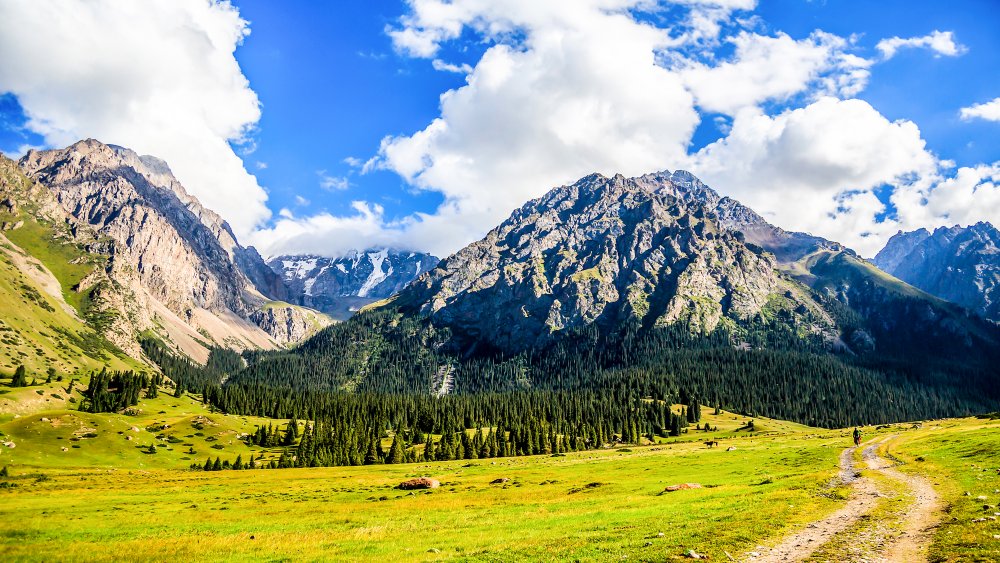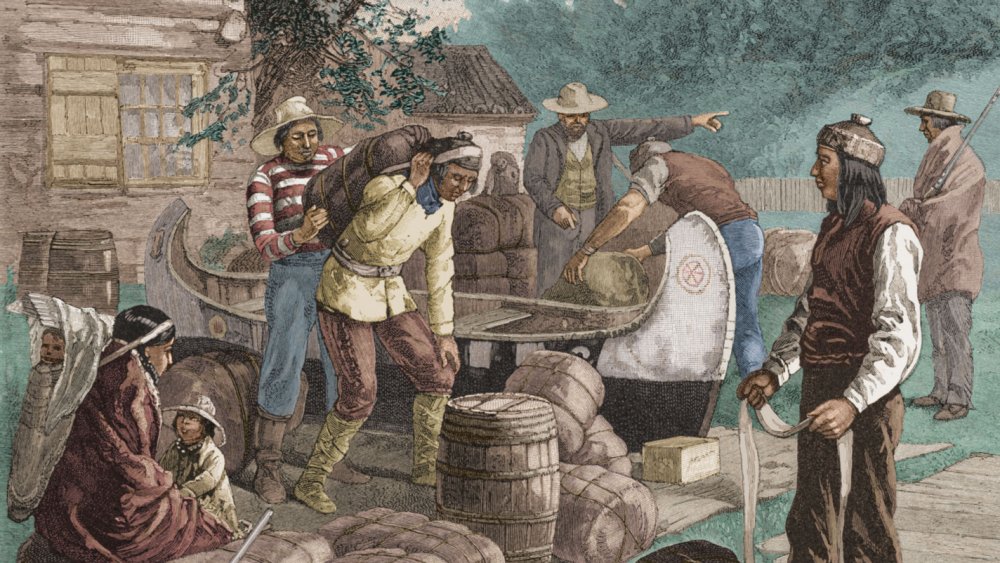What Was The Mountain Men's Annual Rendezvous?
Wait, mountain men had a "rendezvous"? And is a "mountain man" precisely the kind of long-bearded, ax-hefting hermit you imagine him to be? Who exactly were these atavistic conquerors of tree and hill, these intrepid trappers of critters and traders of tabacky? Something a bit more authentic than the kind of mountain men we see on The History Channel, mayhaps?
At present, what began as something of an informal, horseback gathering a couple hundred years ago has morphed into a full-blown LARP. Simply grab a pen and paper, as stated on Legends of America, and scribble an actual paper inquiry to gain access to the US's least tech-savvy cosplay operation "four miles west of Pinedale on U.S. Highway 187." No mention of whether or not GPS is permitted.
But you know who didn't have GPS? Those actual mountain men guys in 1810, doing their whole pioneering bit in the untamed west. Truth be told, most of these mountain men were traders making their way to and from St. Louis and the Rocky Mountains, carrying stacks of furs and surviving off the land. They hunted away from civilization and sold what they got on return trips, procured supplies for the forthcoming year, and then repeated the cycle. Along the way they more or less demarcated the roads used by settlers heading west, and starting around 1825 a kind of drunken, target-shooting, game-playing festival attracting hundreds developed in the middle of nowhere ... perhaps somewhere west of Pinedale.
Fun was had by all in the party on the plains
"Mirth, songs, dancing, shouting, trading, running, jumping, singing, racing, target-shooting, yarns, frolic, with all sorts of extravagances ..." Sign us up!
This was the description of the annual Rendezvous (note the capital "R") by actual, famed mountain man Jim Beckwourth. Everyone was invited to the emergent wilderness shindig: traders, trappers, freelancers, preachers, "white men and Indians" (remember: racism), families, mules, and of course, big name companies. As soon as trading enterprises like the Northwest Company, the Rocky Mountain Fur Company, Hudson's Bay Company, and the American Fur Company caught wind of the antics, they helped buoy the event's popularity while liaising with each other and sending caravans of goods (including copious amounts of alcohol) to exchange for furs. The annual event was held from 1825 to 1840, and reached its height of popularity in the mid-1830's. It spread from communities along the Missouri and Mississippi Rivers out to locations such as Horse Creek on the Green River (a tributary of the Colorado), all the way to Pinedale (it's real!), Wyoming.
If companies were responsible for the growth of the Rendezvous, they were also predictably responsible for its decline. By all accounts, the Hudson's Bay Company, based in Canada, undercut the competition, which led to such a depreciation in the value of beaver pelts that the entire American fur trade system virtually collapsed. There was simply not enough money to be made by 1840, and poof, the party as over.

